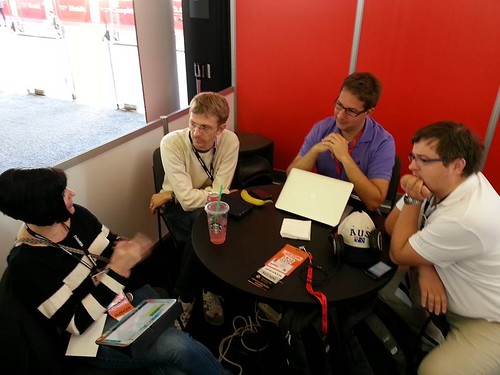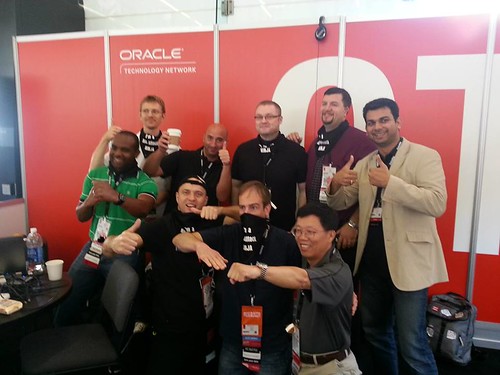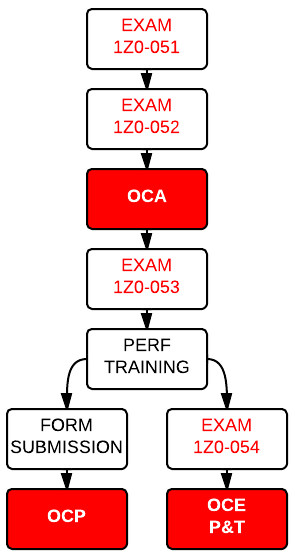In my previous post I’ve talked about some news from the Open World. Now it’s time to talk about MY week and why I’ve loved it…
It’s all about community involvement
The most exciting thing about the OOW is the possibility to interact with great people, bloggers, speakers, experts, and now I can also say friends. In the last decade, I’ve worked hard for customers and dealt with almost all the problems and architectures that an Oracle DBA can face, but I’ve always done few efforts for the community, sometimes because I was having no time, sometimes because I was perceiving it as time-expensive and gainless. I was wrong. It’s time-consuming, yes, but it lets me feel richer.
The first good news
When I’ve landed in the USA, the first mail I’ve read was the following:
Congratulations Bjoern. Bobby, Gokhan and Ludovico on being elected as RAC SIG Office bearers!!!
Vice President: Bjoern Rost
US Conference Events Chair: Bobby Curtis
Website Chair : Gokhan Atil
Regional Chair Europe: Ludovico Cadara
We look forward for you all to take us to the next level. I will include you on our board member email group.
Congratulations again!!
K.P.Singh
Current President, RAC SIG
We’ve made an official announcement on twitter recently:
Welcome new @RACSIG board members! @dbasolved @ludovicocaldara @gokhanatil. New energy! New projects! Community Win!
— Oracle RAC SIG (@racsig) October 23, 2013
So I’ve attended my first RAC SIG meeting at OOW13 at the OTN lounge.

RAC SIG meeting at OOW13
Now I’m weekly (or even daily) in contact with the board by e-mail, tomorrow we’ll have a conf-call to put the bases to work on for the next year. Wish us good luck! 🙂
RAC Attack 12c
Well, I’ve talked about the RAC ATTACK in my previous posts. The event has been a success, we’ve had many attendants, curious people and friends coming to do the lab or get in touch. It has been a great opportunity to collaborate with (and be praised by) several community experts including Oracle ACEs and ACE directors:
The Ninjas:
Seth Miller (@Seth_M_Miller)
Bjoern Rost (@brost)
Yury Velikanov (@yvelik)
Leighton Nelson (@leight0nn)
Bertrand Drouvot (@BertrandDrouvot)
Kamran Agayev (@KamranAgayev)
Martin Nash (@mpnsh)
Maaz Anjum (@maaz_anjum)
Hans Forbrich (@HansForbric)
Tim Hall (@oraclebase)
Ludovico Caldara (@ludovicocaldara) that’s me! 🙂
Other contributors and great people that worked on the project:
Laura Ramsey (@OracleDBDev)
Jeremy Schneider (@jer_s)
Osama Mustafa (@OsamaOracle)
Bobby Curtis (@dbasolved)
Alex Gorbachev (@alexgorbachev)
(If someone is missing please raise the hand!)
Visit the official facebook page for more information.
Also note that the RAC Attack will be present at the UKOUG Tech 2013 and RMOUG 2014, so don’t miss it if you plan to attend these conferences.


The Blogger Meetup
This meeting, organized by Pythian and OTN, allows to meet the most famous and active bloggers in the Oracle Community. This GREAT VIDEO from Björn Rost should give you an idea (I appear at 19”):
Here’s another one, always from Björn:
The Swim in the bay
Literally, a meetup of crazy guys willing to freeze themselves in the bay the early morning!
Chet Justice has organized this and he managed to get sponsorship for swim-caps and T-shirts 🙂 I’m the third from the left, you may recognize many famous people here 🙂
See the facebook page for more information.

Also for this event there is a video, actually I’m closing the video with a dive 🙂
The Golden Gate Run
Jeff Smith has organized this run Sunday morning, a good way to start the week and my first opportunity to meet many new friends!



Once again, see the Facebook page!
Other events
Well, I’ve participated also to the Friends of Pythian Party, the IOUG Party, the Oracle Swiss Partner Lounge, and had many nice evenings.
No, I haven’t attended the appreciation event: I was possessing the ticket but I’ve decided to skip it in favor of a dinner with many great people.
Networking and fun
See some pictures I’ve loaded on Flickr:
You can see the whole set here.
So why everything has changed?
Now I’m part of a community, I’m involved, I learn from others and I let others to learn from me… where applicable! 🙂 Interacting with people from all around the world let me feel stronger and more open to new challenges. And I know that if I have a dream is up to me to chase it and make it come true.
PS: This is an incomplete list of the people I’ve met (other than the RAC Attack contributors).
Make sure to follow them!
Vit Spinka (@vitspinka)
Vanessa Simmons (@pythiansimmons)
Riyaj Shamsudeen (@riyajshamsudeen)
Øyvind Isene (@OyvindIsene)
Carlos Sierra (@csierra_usa)
Gregory Guillou (@ArKZoYd)
Heli Helskyaho (@HeliFromFinland)
Marc Fielding (@mfild)
Jonathan Lewis (@JLOracle)
Fuad Arshad (@fuadar)
Chet Justice (@oraclenerd)
Tim Gorman (@timothyjgorman)
Mark W. Farnham (@pudge1954)
Kerry Osborne (@KerryOracleGuy)
Arjen Visser (@dbvisit)
Kyle Hailey (@kylehhailey)
Steve Karam (@OracleAlchemist)
Eric Grancher (@EricGrancher)
Arup Nanda (@arupnanda)
Kent Graziano (@KentGraziano)
Andrey Goryunov (@goryunov)
James Morle (@JamesMorle)
Christo Kutrovsky (@kutrovsky)
Brian Fitzgerald (@ExaGridDba)
Kellyn Pot’Vin (@DBAKevlar)
Karl Arao (@karlarao)
Jason Arneil (@jarneil)
Gustavo Rene Antunez (@grantunez)
Frits Hoogland (@fritshoogland)
Luca Canali (@LucaCanaliDB)
Chris Buckel (@flashdba)
Cary Millsap (@CaryMillsap)
Paul Vallee (@paulvallee)
Tanel Poder (@TanelPoder)
Connor McDonald (@connor_mc_d)
Gwen (Chen) Shapira (@gwenshap)
Christian Antognini (@ChrisAntognini)
Mauro Pagano (@Mautro)
Jérôme Françoisse (@JeromeFr)
Ittichai (@ittichai)
Jeff Smith (@thatjeffsmith)
Michelle Malcher (@malcherm)
Debra Lilley (@debralilley)
Doug Burns (@orcldoug)



